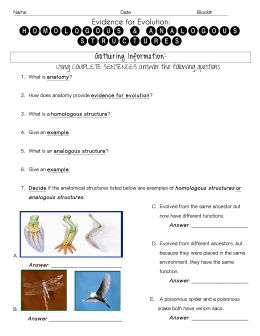
5a, fish lineages that originally had different body patterns might independently evolve analogous vertical stripes, perhaps because of selection for a particular camouflage pattern. For example, two distantly related plant lineages might evolve analogous tubular red flowers under selection from hummingbird nectar feeders. Two lineages that begin with different traits evolve a similar characteristic independently of one another, often because both lineages face similar environmental challenges and selective pressures.


This process produces analogies, as discussed above. Homoplasies can evolve in three ways (though the lines between these categories are often blurry):Ĭonvergent evolution. A homoplasious trait is a similarity among organisms that was not inherited from the common ancestor of those organisms. The counterpart of homology is usually considered to be homoplasy, a much broader concept than analogy. However, biologists often depart from high school texts in their analysis of analogies (e.g., Hall 2007 Gregory 2008). This is the view presented by standard biology textbooks.


 0 kommentar(er)
0 kommentar(er)
